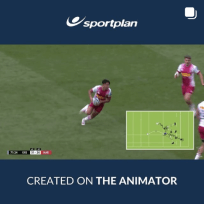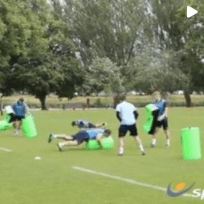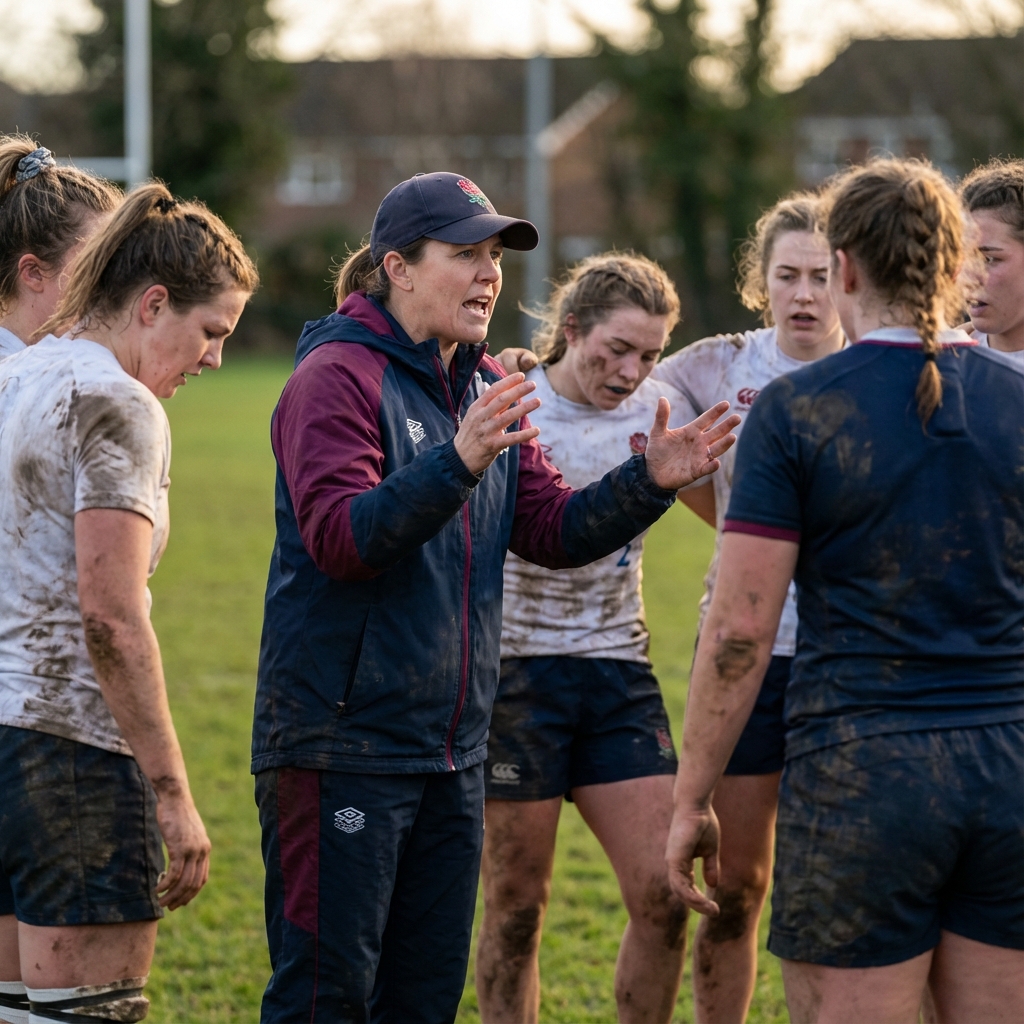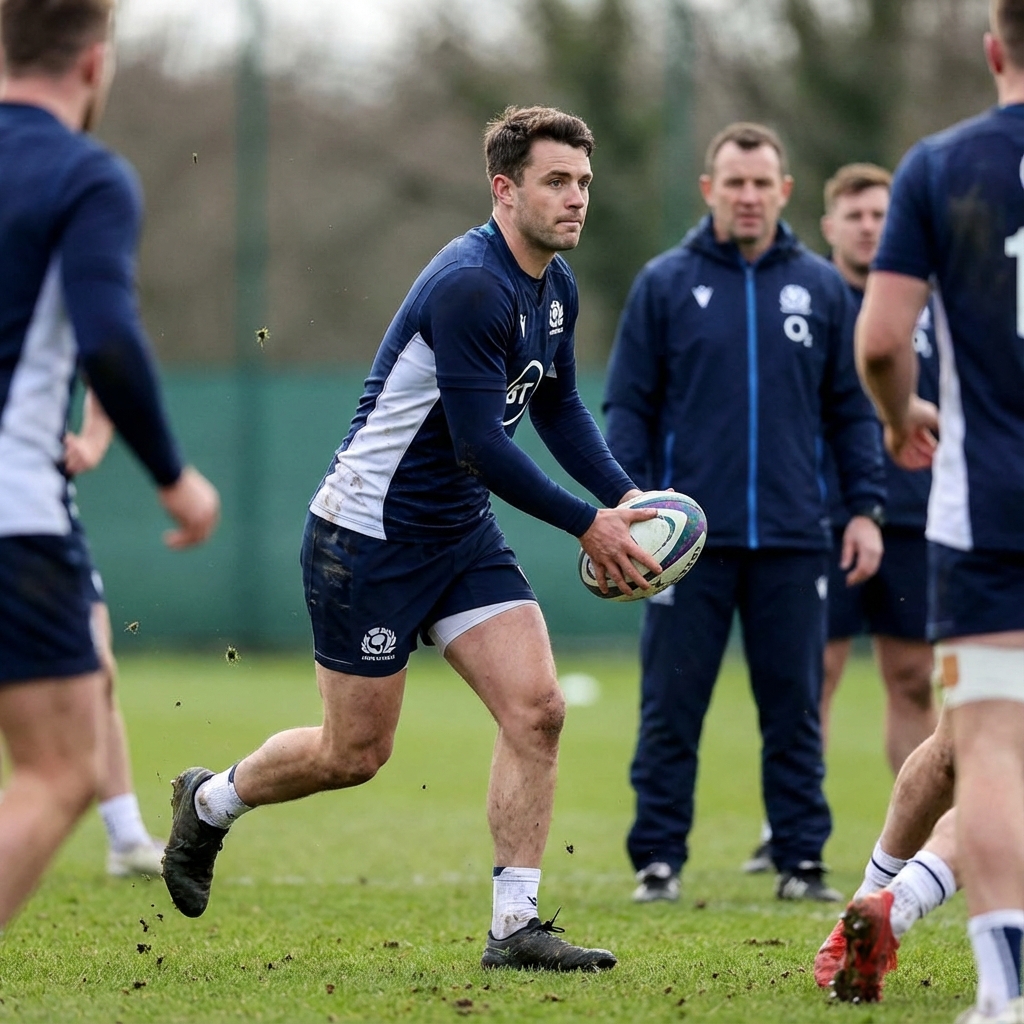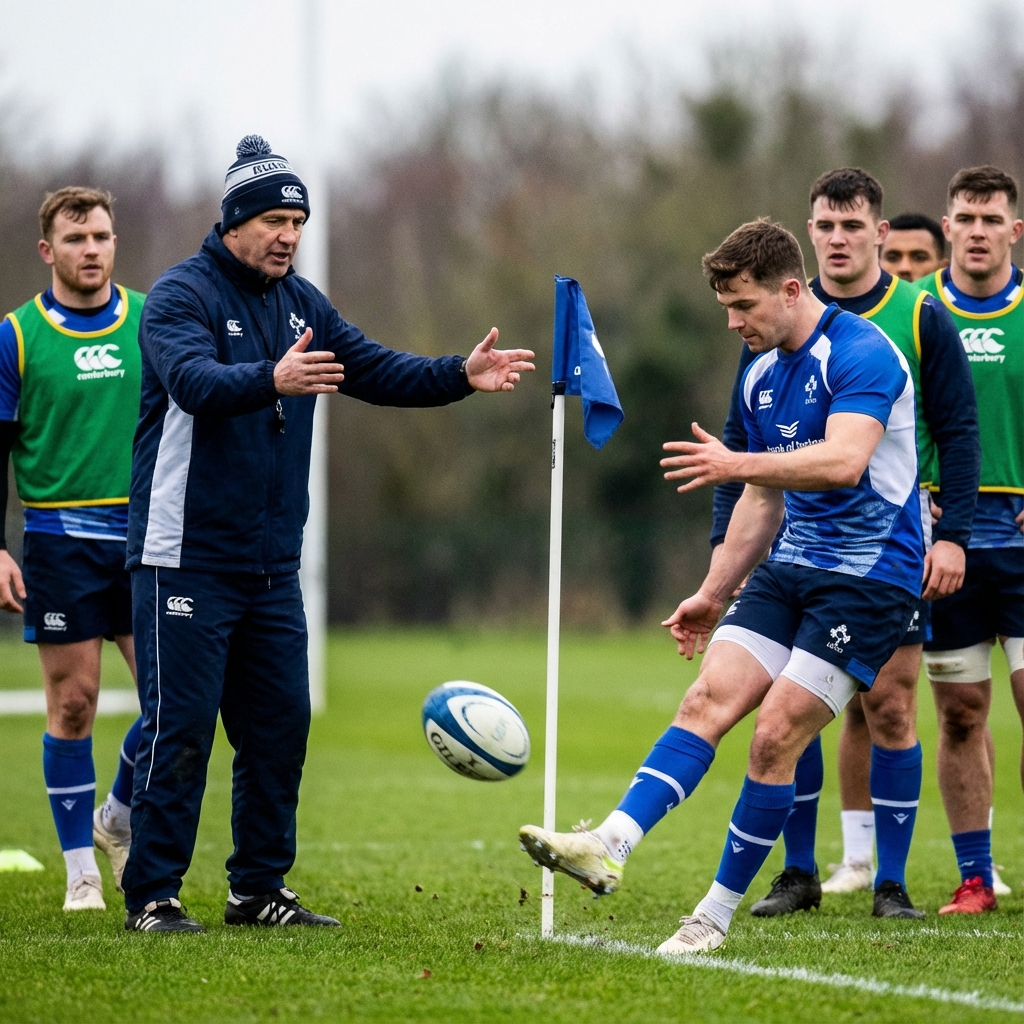(U11 Rugby) - How to referee the 'big lad'
I'm coaching and reffing U11 rugby and one of my players is the definitive 'big lad'. His 'strength' is his size and his power, but last weekend he didn't seem to get reffed fairly.
The opposition couldn't tackle him down, one on one and when another two joined in to make a mini maul, that didn't slow him down much either. The ref then let other people join in the (one sided) struggle to tackle him down, which seemed very unfair as A) it's outside the laws of U11 rugby,, B) it makes it nigh on impossible for him to offload, C) when he is brought to ground, he has 4-5 players all over him and he got pinged for 'holding on'.
He is a recent arrival to rugby and it was our first game for a couple of months, so the situation hadn't reared his head before. We are keen that he learns all of the core skills of rugby and doesn't get used as a battering ram, but after seeing a pack of hyenas trying to pull down the big fella, something just didn't seem right to me.I'd be grateful for any thoughts and opinions.
Hey Paul,
Good Question.
That he is an U11 makes this more tricky to answer but I can give a law assessment (based on your description, as if it were from a mens game) and then maybe some thoughts on him being an U11.
So the law bit, a maul is two players from one team and one player from the other, your correct in allowing more players from the opposition to join (via the back foot). That the attacking team only has one player in, is irrelevant.
I think your confusion comes next:
Once calling maul, the only player who can legally bring it to ground is the ball carrier, if the defending players then make a tackle/ bring him to floor it`s collapsing the maul, penalty to the big un`.
If you/the referee correctly calls maul then there is no longer an obligation for anyone to release the ball. A maul cannot become a ruck, thus he can`t be pinged for holding on. If the player is brought to ground (legally) and the ball made unplayable (attacking team unable to recycle) then it`s a turnover to defending team, scrum- `failed maul`.
On five players swamping the ball carrier you need only to watch Ireland and England`s international defence to know that the `choke tackle` has become a very fashionable way of holding up the ball carrier, it is entirely legal.
Obviously that wouldn`t be easily applied to an U11s game, but I think it clears things up a little. If you are reffing by the laws then I don`t think the onus is on the referee to stop the big lad getting swamped, he will always be like bees to honey as they know he`s the threat.
I personally think junior club rugby should be run similar to what is practiced in New Zealand, players are grouped by weight and size, not age. If you really want your lad to learn core skills more effectively, there is nothing stopping him playing up a few years, thus playing with players more of his size and development. As his team mates catch up he can drop down again.
Hope that helps!
Hello Ieuan
Thanks for your thoughts, they`re really appreciated. At U11 level, the New Rules Of Play in England say that the tackler, can be joined by no more than 2 players.
Our Big Lad is a very strong unit. Currently, he`s very capable of driving forwards with one player around his leg (attempting the tackle) and two players around his torso, attempting to slow him down/rip the ball.
The U11 rules say that once the maul is formed (by 2 players from either side joining them), that he has 5 seconds to use it.
To date, most referees are happy to let him carry on driving, particularly if he is doing it without assistance, until he goes static. After which they`ll give him a few seconds to use it or lose it.
We`re moving towards letting the players drive onwards (not singling him out), until going static, then taking the ball to ground to form a ruck (if able to do so).
Its a tricky one to know what to do for the best. We absolutely don`t want him to become a one trick pony, and for him to learn the other core skills, but currently his strenghth is his strength!
There isn`t an option for him playing up more than one year agegroup. Plus, he wouldn`t get the chance to play with his mates !!! Although physically he`s a big lad, mentally, he`s the same as his buddies.
Paul - Iam also coaching at U11 and have a very similar issue with a player who is incredibly powerful and a gifted rugby player. He is a one man wrecking machine and scores more tries each year than the rest of the team put together as noone wants to tackle him. I have found that the best way to deal with the problem you have is through negotiation with the other coaches - they all know our lad now and will put on stronger players when he is on the pitch - this challenges them and us and keeps it a fair contest. Early discussion on the ruck and maul situation also helps prevent the overcrowding situation and therefore wont frustrate your player when they cant offload. I also try to use games where the tackling is weak to bring on his skills - giving him instructions that he cannot score tries and must try to pass and run in support or make the break and offload (at 11 years old there is alway a balance and if he breaks free and the line is clear he can go for it but if he is even partly held I want him to look to offload or set the ruck again). This way he develops and we make sure the rest of the team develop too. In the end he will not always be the strongest and biggest on the pitch and needs to learn the skills now. Its a fine balance on how to keep him interested but I have found giving him challenges with the game tend to work - offload, run the support lines, loops, deliberately going to ground even when lightly tackled to create a breakdown so others can develop etc etc. He gets it and is willing to give it a go. Then let him loose when you know you have good opposition against you. Chris
Hi Paul,
There is nothing in the U11 rules about the maul moving forward, that comes later. You/The Ref must call a maul as soon as one exists, and they only have 5 seconds following that to do something with it. The Ref shoud shout "Use It" as the 5 seconds expire, and if the ball doesn`t leaglly go to ground or come out of the maul, it`s a turnover ball.
This is all supposed to (and in my experience does) help with the pace of the game and not encoraging prolonged rucks and mauls with large numbers of players.
You are absolutly right about the ball going to ground. We coach the kids that as soon as you hear the ref shout `maul` you have 5 seconds to get the ball to ground or twist and offload to a team mate.
In respect of getting the kids to not break the rules on numbers in the ruck or maul, I find a nice loud shout of "Numbers Team X" as a warning, followed by whistle and free kick to the team infringing if they don`t sort it out pronto.
Hope this all helps,
Antony
Hi Paul I feel your pain. I`ve coached all age groups up to and including seniors. The reason I mention this is because you have a balancing act to play here. You`ll probably find that things will even out size and height wise when your lads hit puberty so your job is to keep them all motivated up to and beyond that point. You might find that at senior level your big lad becomes the scrum half and your smallest player becomes a lock. So how do you solve the current issue?
My guess is that the big lad is the one the others pass the ball to and they then allow him to go through like a battering ram. This doesn`t help his skill level as you mentioned. It doesn`t help the rest of the team and it doesn`t help the opposition. The lads will only stick it if it`s fun and they`re learning something all the time so you might want to look at a change of mindset for your players. Instead of them thinking of the game as a contact game they might want to think of it as an evasive game with as little contact as possible and only when necessary.
To do this you could look at changing the positions around in open play or from a ruck and have the big lad be the first receiver who then has to pass the ball to a support runner thereby immediately freeing players up to find space.
You could use small rewards or a profile sheet for each player which gets ticked after they complete a task. This way it`s more of a team game and they`ll all stay motivated. Hope this helps.
Answered using Sportplan on Mobile







